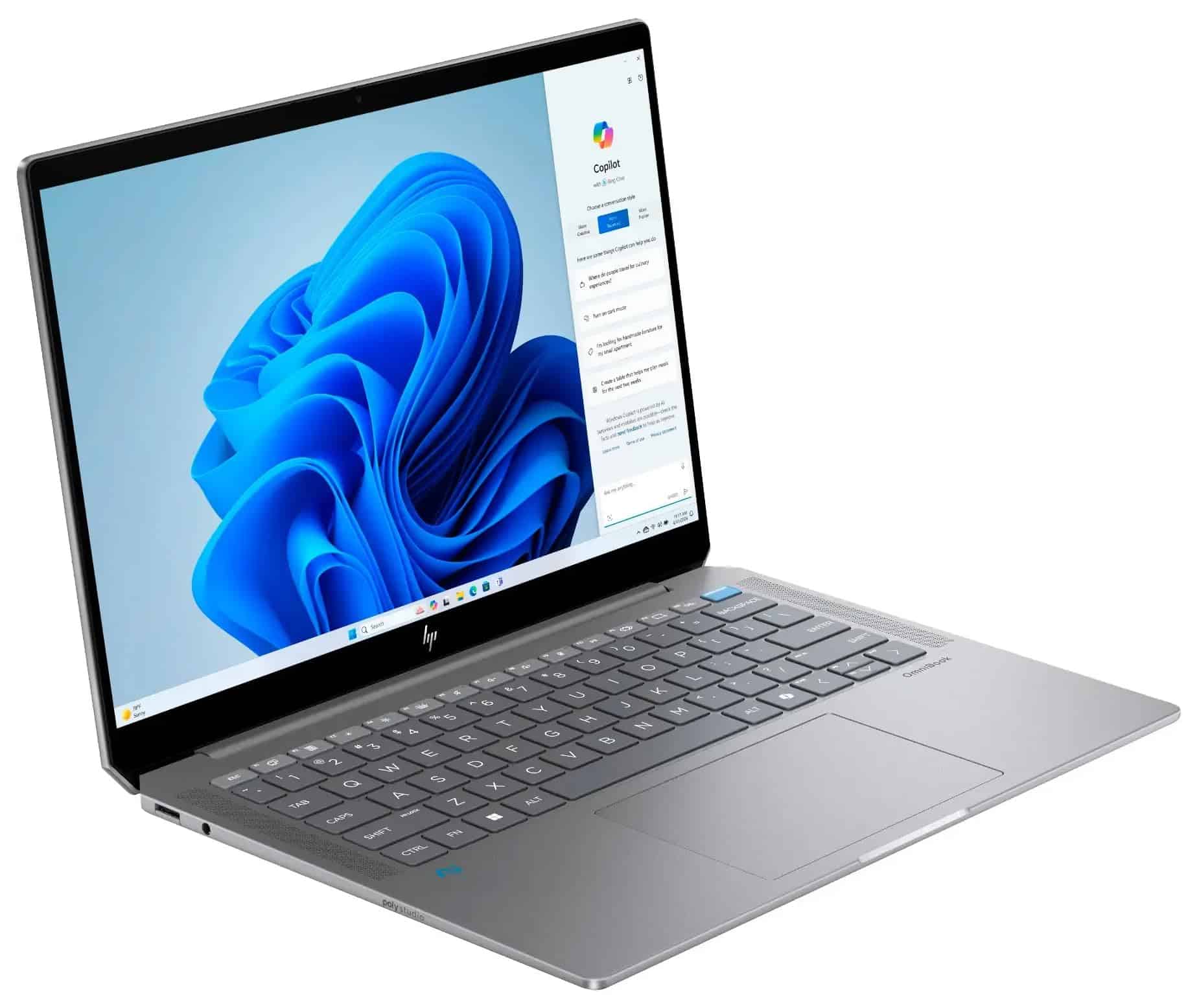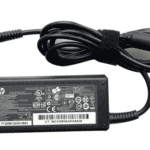Is your HP laptop shutting down without warning? This frustrating problem can interrupt your work, cause data loss, and leave you wondering what’s wrong with your computer. Random shutdowns in HP laptops are often caused by overheating, battery issues, power supply problems, or software conflicts that can be fixed with proper troubleshooting.
Many HP laptop users face this issue, but the good news is that most shutdown problems have simple solutions. The first steps should include checking for dust buildup in cooling vents, ensuring your laptop has proper ventilation, and running Windows diagnostic tools. A BIOS update might also resolve unexpected shutdown issues, as outdated firmware can sometimes cause system instability.
If basic troubleshooting doesn’t work, you might need to check the battery connections or look at the event logs to find error messages. These logs can show what happened right before the shutdown, giving important clues about whether the problem is hardware or software related.
Here are the steps to fix an HP laptop that randomly shuts down:
How To Fix HP Laptop Randomly Shutting Down
1. Check for Overheating
- Place your hand near the vents while the laptop is running.
- If it feels excessively hot or shuts down during heavy tasks, overheating might be the cause.
- Fix: Clean the vents with compressed air and ensure proper ventilation. Use a cooling pad if necessary.
2. Update BIOS and Drivers
- Go to the official HP Support website.
- Enter your laptop model and download the latest BIOS and driver updates.
- Install and restart your laptop.
3. Run HP Hardware Diagnostics
- Turn off the laptop.
- Press the Power button and immediately tap the Esc key repeatedly.
- Press F2 to run HP PC Hardware Diagnostics.
- Run a System Test or Component Test to check for hardware issues.
4. Scan for Malware
- Use Windows Security or any trusted antivirus software to perform a full system scan.
- Remove any detected malware or suspicious programs.
5. Disable Fast Startup
- Go to Control Panel > Power Options > Choose what the power buttons do.
- Click Change settings that are currently unavailable.
- Uncheck Turn on fast startup and save changes.
6. Change Power Settings
- Go to Control Panel > Power Options.
- Select Balanced or High performance.
- Click Change plan settings > Change advanced power settings.
- Ensure settings like Processor power management and Sleep are not set too aggressively.
7. Check Battery and Charger
- Use the laptop with and without the battery (if removable) to isolate the issue.
- Try a different HP-compatible charger to rule out power supply problems.
8. Check for Windows Errors
- Press Win + X and select Event Viewer.
- Look under Windows Logs > System for Critical or Error messages at the time of shutdown.
9. Perform a Clean Boot
- Press Win + R, type
msconfig, and press Enter. - Go to the Services tab, check Hide all Microsoft services, then click Disable all.
- Go to the Startup tab and click Open Task Manager.
- Disable all startup items and restart the laptop.
10. Reset the Laptop (Optional)
- If all else fails, back up your files.
- Go to Settings > System > Recovery > Reset this PC and follow the prompts.
These steps should help identify and fix the root cause of random shutdowns on your HP laptop.
Key Takeaways
- Random shutdowns are typically caused by overheating, battery issues, or software conflicts that can be resolved through proper cleaning and maintenance.
- Running Windows diagnostic tools and checking event logs can help identify the specific cause of your HP laptop’s shutdown problem.
- BIOS updates and ensuring proper ventilation are simple fixes that often solve random shutdown issues without requiring professional repair.
Understanding the Shutdown Problem
Random shutdowns on HP laptops can be frustrating and disruptive. These unexpected power-offs happen without warning and can be caused by various hardware or software issues that need proper diagnosis to fix effectively.
Signs and Symptoms of Random Shutdowns
HP laptops experiencing shutdown problems typically show several warning signs. The most obvious is when the laptop powers off suddenly during use without any error message. Sometimes the device may not turn back on for several minutes afterward, as mentioned in the Microsoft Community reports.
Some users notice their laptop screen freezes briefly before shutting down. Others report hearing the fan running at high speeds right before the shutdown occurs.
Temperature-related shutdowns often happen during resource-intensive tasks like gaming or video editing. The system might also show warning messages about temperature before shutting down, though not always.
Battery-related shutdowns typically happen without warning and might be more common when the laptop reaches certain battery percentage levels.
Distinguishing Between Hardware and Software Issues
Hardware problems usually cause consistent shutdown patterns. Overheating is a common hardware cause – when internal components get too hot, the laptop shuts down to prevent damage. Dust-clogged cooling vents or malfunctioning fans often contribute to this problem.
Battery connection issues can trigger shutdowns too. Loose connections or a failing battery might cause the laptop to power off unexpectedly even when showing adequate charge.
Software issues have different patterns. Windows settings might be configured to restart automatically when certain system errors occur. This appears as a random shutdown to the user.
Outdated drivers, especially for critical components like the graphics card or processor, can cause stability problems leading to shutdowns. The Device Manager can help identify these issues.
BIOS problems might also be responsible, which is why HP Support often recommends BIOS updates to solve random shutdown issues.
Immediate Actions to Take
When your HP laptop suddenly shuts down, quick action can prevent further damage and help identify the cause. These first steps don’t require technical expertise but can often resolve common shutdown problems.
Performing a Hard Reset
A hard reset clears temporary issues that might cause random shutdowns. To perform this on your HP laptop:
- Turn off your laptop completely
- Unplug the power adapter
- Remove the battery (if removable)
- Press and hold the power button for 30 seconds
- Reconnect the battery and power adapter
- Turn on your laptop
This process drains residual power from capacitors and can fix electronic glitches. After a hard reset, check if your laptop still shuts down randomly. Many HP users report this simple step solves their problem without needing further troubleshooting.
Checking the Power Source
Power issues often cause unexpected shutdowns. Start by examining your power setup:
- Inspect the AC adapter for damage (frayed wires, bent pins)
- Try a different wall outlet
- If possible, test with another compatible charger
Make sure the battery is holding charge properly. Check battery health in Windows by typing “powercfg /batteryreport” in Command Prompt. The report shows if your battery needs replacement.
Turn off sleep mode temporarily as it can sometimes trigger shutdowns. Go to Settings > System > Power & sleep and set both screen and sleep timers to “Never” for testing purposes.
Troubleshooting Power Supply Issues
Power problems are often behind random laptop shutdowns. When your HP laptop suddenly turns off, it’s important to check all components that deliver power to your system.
Inspecting the AC Adapter and Battery
Start by examining your AC adapter for visible damage. Look for frayed wires, bent connectors, or burn marks. A damaged adapter can cause short circuits that trigger automatic shutdowns.
Try using a different power outlet to rule out electrical issues in your home or office. If possible, test your laptop with another compatible HP adapter to determine if yours is faulty.
Next, check your battery health. Remove the battery (if possible) and try running the laptop on AC power alone. If it stops shutting down, your battery might be the culprit. In Windows, you can check battery health by typing “powercfg /batteryreport” in Command Prompt and reviewing the generated report.
Most HP laptops have battery lights that indicate problems – a blinking orange light often signals battery issues.
Testing the Power Button Functionality
A faulty power button can cause unexpected shutdowns. To test this, press the power button and note how it feels. It should click smoothly and spring back immediately.
If the button feels sticky or unresponsive, dust or debris might be interfering with its function. Power buttons connect to the motherboard through small cables that can become loose or damaged.
Try these steps to test the power button:
- Turn off your laptop completely
- Press and hold the power button for 30 seconds
- Release and try powering on normally
This process resets power components and can help identify if the button itself is malfunctioning. For persistent issues, you might need to open the laptop case to check the power button connector on the motherboard.
Replacing the CMOS Battery
The CMOS battery maintains your laptop’s basic settings when it’s powered off. When this small coin-shaped battery fails, it can cause various power issues, including random shutdowns.
Signs of a failing CMOS battery include:
- Incorrect date and time after startup
- BIOS settings reset after shutdown
- Error messages during boot
To replace the CMOS battery:
- Power off your laptop and disconnect all cables
- Remove the main battery if possible
- Open the back panel (consult your HP model’s manual)
- Locate the small round battery on the motherboard
- Carefully remove the old battery and insert the new one
CMOS batteries typically cost $5-10 and last 3-5 years. After replacement, you’ll need to reconfigure your BIOS settings and reset the system date and time.
Addressing Potential Overheating
Overheating is one of the most common reasons HP laptops shut down unexpectedly. When internal components get too hot, the system automatically powers off to prevent permanent damage.
Identifying Symptoms of Overheating
Several signs indicate your HP laptop might be overheating. The most obvious is when the bottom of the laptop feels uncomfortably hot to touch. You might also notice the fan running loudly or constantly, even during simple tasks.
Performance issues often appear before shutdown. Your laptop might slow down significantly or freeze during normal use. Applications may crash more frequently than usual.
Watch for pattern-based shutdowns. If your laptop turns off during resource-intensive activities like gaming or video editing, heat is likely the culprit. Some HP models display warning messages or temperature alerts before shutting down.
Physical placement matters too. Shutdowns that happen when the laptop sits on soft surfaces like beds or couches point to blocked air vents causing overheating.
Cleaning Vents and Fans
Dust buildup is a major cause of overheating. Regular cleaning of vents and fans can significantly improve your laptop’s cooling efficiency.
Basic cleaning steps:
- Power off your laptop completely
- Unplug the power adapter
- Use compressed air to blow dust from all vents
- Do this in short bursts to avoid damaging the fan
For deeper cleaning, consider opening the laptop case. This often requires removing several screws from the bottom panel. Once inside, use compressed air to remove dust from internal components, especially the fan and heat sink.
Apply new thermal paste if your laptop is over 2-3 years old. The original paste dries out over time, reducing heat transfer efficiency. Many repair shops offer this service if you’re not comfortable doing it yourself.
Monitoring Temperature Levels
Keep track of your HP laptop’s temperatures to catch overheating issues early. Several free software options help monitor internal temperatures.
Recommended temperature monitoring tools:
- HWMonitor
- Core Temp
- SpeedFan
- HP Support Assistant
Normal operating temperatures for most HP laptops range between 30-45°C when idle and 60-85°C under load. Consistent readings above 90°C indicate a serious overheating problem.
Adjust power settings to reduce heat generation. Windows power plans let you limit CPU performance, which decreases heat output. In HP laptops, you can access these settings through the Power Options in Control Panel.
Consider purchasing a cooling pad with fans. These affordable accessories improve airflow under your laptop and can reduce temperatures by 5-15°C during intensive tasks.
Software and Operating System Solutions
Software issues often cause random shutdowns on HP laptops. By addressing operating system problems, updating key components, and fixing corrupted files, you can often solve shutdown issues without hardware repairs.
Boot into Safe Mode to Diagnose Issues
Safe Mode starts Windows with minimal drivers and services, which helps identify if software is causing your HP laptop to shut down randomly. To enter Safe Mode in Windows 10, restart your computer and hold the Shift key while clicking Restart. This opens the Windows Recovery Environment.
From the troubleshooting menu, select Advanced options, then Startup Settings, and finally Restart. After your computer restarts, press F4 to enter Safe Mode.
If your laptop doesn’t shut down in Safe Mode, a third-party program is likely causing the problem. Try uninstalling recently added programs one by one, testing your laptop between each removal to find the culprit.
You can also check Event Viewer for error messages related to the shutdowns. Search for “Event Viewer” in the Windows search bar, then look under “System” for critical errors around the times when shutdowns occurred.
Removing Malware and Viruses
Malware and viruses can cause system instability and random shutdowns on your HP laptop. Run a full system scan using Windows Security (formerly Windows Defender) or another trusted antivirus program.
To use Windows Security:
- Type “Windows Security” in the search bar
- Select “Virus & threat protection”
- Click “Scan options”
- Choose “Full scan” and select “Scan now”
For stubborn malware, boot into Safe Mode (as described above) before running your scan. This prevents malware from loading at startup and makes it easier to remove.
Consider using specialized anti-malware tools like Malwarebytes to catch threats that regular antivirus software might miss. After removing any malware, restart your computer and check if the random shutdown issue persists.
Disabling Fast Startup Feature
Fast Startup can sometimes cause shutdown problems on HP laptops. This Windows 10 feature saves system files to a hibernation file to speed up boot times, but it can conflict with some hardware configurations.
To disable Fast Startup:
- Open Control Panel
- Click on “Power Options”
- Select “Choose what the power buttons do”
- Click “Change settings that are currently unavailable”
- Uncheck “Turn on fast startup“
- Click “Save changes”
After disabling Fast Startup, restart your computer and use it normally to see if random shutdowns still occur. This solution is particularly effective for HP laptops that shut down when resuming from sleep or hibernation.
Some users report that Fast Startup causes issues with thermal management on certain HP models, leading to overheating and protective shutdowns.
Updating and Resetting BIOS Settings
The BIOS controls fundamental hardware functions on your HP laptop. Outdated or incorrect BIOS settings can cause random shutdowns, especially during resource-intensive tasks.
To update your BIOS:
- Visit HP’s support website
- Enter your laptop’s model number
- Download the latest BIOS update
- Follow the installation instructions carefully
Warning: Never interrupt a BIOS update as it may damage your system.
To reset BIOS settings to defaults:
- Restart your laptop
- Press F10 repeatedly during startup to enter BIOS
- Look for “Restore Defaults” or “Load Setup Defaults” option
- Save changes and exit
BIOS updates often include thermal management improvements that can prevent overheating-related shutdowns. Check if your HP laptop has specific BIOS updates addressing shutdown or thermal issues.
Repairing System Files with DISM Command
Corrupted system files can cause unexpected shutdowns. Windows includes powerful tools to fix these issues without reinstalling the operating system.
Open Command Prompt as administrator by searching for “cmd” in the Windows search bar, right-clicking on Command Prompt, and selecting “Run as administrator.” Then run these commands:
sfc /scannow
This command scans all protected system files and replaces corrupted files with a cached copy.
If problems persist, run the DISM commands:
DISM /Online /Cleanup-Image /CheckHealth
DISM /Online /Cleanup-Image /ScanHealth
DISM /Online /Cleanup-Image /RestoreHealth
These commands check, scan, and repair the Windows image. The process may take 15-30 minutes to complete.
After running these commands, restart your computer and check if the random shutdown issue is resolved. If system file corruption was causing your HP laptop to shut down, these tools should fix the problem.
Considering Professional Repair Services
When DIY fixes don’t solve your HP laptop’s random shutdown problems, professional repair services can offer expertise and specialized tools to diagnose and fix complex issues.
Seeking Support from HP Tech Assistance
HP’s official tech support can be a reliable option for fixing shutdown problems. Their technicians have direct access to your laptop’s specifications and can identify model-specific issues quickly. You can contact HP support through their website, phone, or chat services.
HP offers different support options based on your warranty status. If your laptop is still under warranty, repairs might be free. For out-of-warranty devices, HP provides paid repair services with genuine replacement parts.
The HP Virtual Agent can help troubleshoot basic problems before you speak with a technician. For hardware issues like faulty cooling systems or power components, HP’s diagnostic tools can pinpoint the exact problem.
Exploring Third-party Service Providers
Many third-party repair shops specialize in laptop repairs at competitive prices. Best Buy’s Geek Squad offers comprehensive diagnostic services for about $100, which can be applied toward repair costs if you proceed with their service.
Local computer repair shops often provide faster turnaround times and personal attention. They may charge lower rates than manufacturer services, especially for common hardware issues like fan replacements or power supply problems.
Online services like JustAnswer connect you with tech experts who can guide you through troubleshooting steps remotely. These services typically charge per consultation rather than per repair, making them cost-effective for simpler issues.
When choosing a third-party service, check reviews and ask about their experience with HP laptops specifically. Ensure they offer warranties on their work and use quality replacement parts.
Protecting Against Data Loss
Random laptop shutdowns can put your important files at risk. Having protection measures in place can save you from losing crucial documents, photos, and other data when your HP laptop unexpectedly powers off.
Regular Backup Strategies
Setting up automatic backups is one of the best ways to protect your files. Windows includes built-in backup tools like File History that can save copies of your documents to an external drive or cloud storage.
Cloud storage services like Google Drive, Dropbox, and OneDrive offer another layer of protection. These services automatically sync your files whenever you’re connected to the internet.
For critical work files, consider using the 3-2-1 backup method:
- Keep 3 copies of important data
- Store them on 2 different types of media
- Keep 1 copy offsite (cloud storage works well for this)
You can also schedule regular manual backups if automatic options don’t suit your needs. Set weekly reminders to copy important files to a backup drive.
Using Recovery Tools in Case of Data Loss
If a sudden shutdown causes file corruption or data loss, Windows offers several recovery options. The File History feature not only backs up files but also helps restore previous versions if current ones become damaged.
For more serious cases, tools like Recuva can scan your drive for deleted or damaged files after a crash. These programs often recover documents that seem permanently lost.
Windows System Restore points can help when system files are affected. They take snapshots of your system that you can return to after a crash.
Some HP laptops include HP Recovery Manager, which can help restore your system to working order. For severe cases where the operating system won’t boot, recovery media (USB or DVD) can be used to access recovery tools.
Resetting and Restoring the Laptop
When your HP laptop keeps shutting down randomly, sometimes the best solution is to reset or restore the system to clear potential software issues causing the problem.
Utilizing the ‘Reset This PC’ Feature
Windows 10 includes a built-in tool called “Reset This PC” that can help fix many software-related shutdown problems. To access this feature:
- Open the Settings app by pressing Windows key + I
- Navigate to Update & Security > Recovery
- Under “Reset this PC,” click Get Started
- Choose to either Keep my files or Remove everything
During the reset process, don’t shut down your laptop manually. If your laptop turns off during reset, it could be due to overheating or power issues. Try pressing the Esc key repeatedly when restarting to access recovery options.
For stubborn cases, you can try the power button method: turn off your laptop completely, then press the power button and hold it down for about 5 seconds until it shuts down automatically. This can sometimes clear issues that prevent proper reset.
Reinstalling the Operating System
If resetting doesn’t work, reinstalling the operating system might be necessary. You’ll need:
- A working computer to create installation media
- A USB drive (8GB or larger)
- Internet access to download Windows
First, download the “Media Creation Tool” from Microsoft’s website. Run the tool and select “Create installation media for another PC.” Follow the prompts to create a bootable USB drive.
To install from the USB:
- Insert the USB into your troubled laptop
- Restart and press the boot menu key (often F9 on HP laptops)
- Select the USB drive to boot from it
- Follow on-screen instructions to install Windows
Be sure to back up important files before reinstalling, as this process will erase all data on your drive. After installation, install HP drivers from their official website for best performance.
Frequently Asked Questions
HP laptop shutdowns can happen for many reasons. Here are answers to some common questions about this frustrating problem.
What could cause my HP laptop to shut down suddenly even when the battery is fully charged?
Several issues might cause your fully charged HP laptop to shut down unexpectedly. Overheating is a common culprit – dust buildup in fans and vents blocks proper airflow.
Hardware problems like a failing power supply or motherboard issues can also trigger sudden shutdowns. Sometimes, outdated drivers or BIOS cause system instability.
Malware infections can force shutdowns too. Run a full virus scan to check for malicious software.
How can I troubleshoot an HP laptop that keeps shutting down on startup?
Start by trying to boot in Safe Mode by pressing F8 during startup. This helps determine if software is causing the problem.
Remove the battery and run only on AC power to check if the battery is faulty. Many HP laptops will run without a battery installed.
Reset the BIOS to default settings by accessing the BIOS menu at startup (often F10). This can fix startup configuration issues.
Check for loose connections inside the laptop if you’re comfortable opening it. Sometimes a disconnected component causes shutdown loops.
What steps should I take if my HP laptop turns off unexpectedly and won’t turn back on?
First, wait about 10 minutes before trying to restart. According to search results, some HP laptops need a cool-down period.
Remove the battery and disconnect the power adapter. Hold the power button for 30 seconds to discharge residual power.
Check your power adapter and cord for damage. Try a different outlet or known working adapter if possible.
If it still won’t turn on, try removing RAM and reinserting it. Loose memory modules can prevent proper startup.
Why might an HP laptop randomly power off and restart by itself, and how can I fix it?
Random restarts often indicate overheating. Clean dust from vents using compressed air and check that cooling fans run properly.
Update your BIOS to the latest version. HP provides update tools on their support website for each specific model.
Check for Windows updates. Operating system issues can trigger unexpected restarts.
Run hardware diagnostics (press F2 during startup on many HP models) to identify failing components that might cause restarts.
How can I prevent my HP laptop from randomly turning off, especially when it’s not overheating?
Use a cooling pad to improve airflow around your laptop. This helps even when overheating isn’t the main issue.
Update all drivers, especially graphics and chipset drivers. Outdated drivers can cause system instability.
Check power settings in Windows. Go to Control Panel > Power Options and select a balanced or high-performance plan.
Consider replacing the CMOS battery if your laptop is older. As mentioned in search results, this small battery can cause shutdown issues when it fails.
What are the potential solutions for an HP laptop screen that keeps going black without the system shutting down?
Test your laptop with an external monitor. If the external display works fine, your laptop’s screen or display cable might be faulty.
Update graphics drivers from the HP support website or directly from Intel/AMD/NVIDIA depending on your graphics card.
Check display settings by right-clicking on the desktop and selecting Display settings. Make sure resolution and refresh rates are appropriate.
Look for loose connections by gently flexing the screen while it’s on. If the display flickers during movement, the internal cable might need reseating or replacement.







